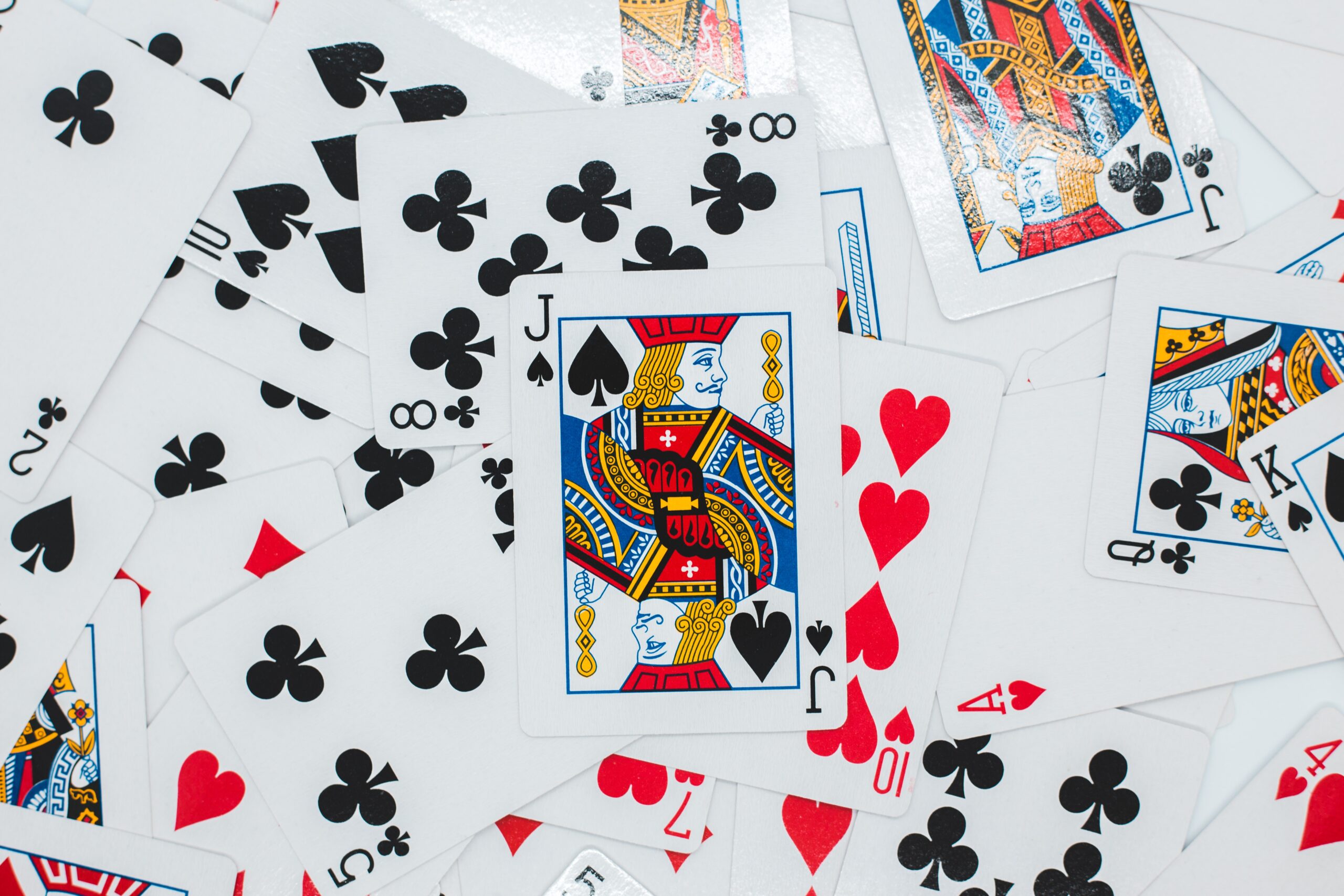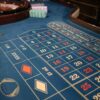Introduction
The most common poker hands in the game are those that can be easily identified by their names. The problem with the “common” hands is that they aren’t necessarily the easiest ones to make! In this article, we will be looking at some of these common hands and explaining how they come about.
Find out which hands are the most common in poker.
- High card. This is the least valuable hand in poker, but it does get you into each round of betting for free. If your hand doesn’t beat any other player’s, you can just fold and save yourself from losing more chips.
- One pair (also called two pairs). This means that you have two cards of the same rank (like two kings) and three unmatched cards or less that have no value by themselves (like a 6, 8 and 9). If you have one pair, your chances at winning are pretty good as long as no one else has also paired their pocket cards with another card on their hand!
- Two pairs (also called three of a kind). Similar to having one pair except that now you’ve got two matching ranks in addition to your third unmatched card(s). If they’re all low values like 5s or 2s then chances are no one else will be able to beat them; however if someone else has two 5’s then it becomes increasingly important for them not to make an error if they want those extra chips!
4-6: Three through six consecutive numbers are generally considered “common” hands because there aren’t many combinations available other than these patterns which makes them easy for beginners learning how to play poker online via video tutorials like those found here on this webpage 🙂 .
The hands from highest to lowest rank are; high card, one pair, two pair, three of a kind, straight, flush, full house, four of a kind, straight flush and royal flush.
The hands from highest to lowest rank are; high card, one pair, two pairs, three of a kind, straight, flush, full house, four of a kind and royal flush.
A high card is the weakest possible hand and is made up of any single card that isn’t paired with other cards. For example if you were dealt an ace you would have a pair of aces (Ace-Ace). One pair makes up the second strongest hand in Poker. This hand consists of two cards with identical ranks and three unrelated side cards. For example if you were dealt two queens and three sevens then your hand would be considered a “queen-queen” since it’s made up entirely by queens but with unrelated side cards (7s).
Two pairs is also known as “pair plus kickers” meaning that there are two pairs present in your hand along with one additional unmatched card which acts as an extra kicker or bonus point for making up more points than your opponent’s hands do when comparing them together at showdown time. e g: A K 5 3 vs 7 6 4 = winner: A K 7 6 4 since they have more points than their opponents’ hands do when comparing them together at showdown time (which will happen after all betting rounds have been completed).
The high card is the weakest hand possible. It’s simply a hand that doesn’t have any other meaningful classification.
The high card is the weakest hand possible. It’s simply a hand that doesn’t have any other meaningful classification. You have no pair, you don’t have a flush or straight, you don’t even have three of a kind or two pair. You just have the highest card in your hand.
In other words, if all you have is one ace and nothing else to go with it, then that’s all you get! The rest of your cards can be anything (two 2s, three 3s etc) but there will still only be one king among them so technically it’s still an ace when it comes down to ranking hands by their strength and not just by position on the table (ie: “I’ll call with my ace”).
A pair is exactly what its name suggests; it consists of two cards of identical rank with three unrelated side cards (kickers).
A pair is exactly what its name suggests; it consists of two cards of identical rank with three unrelated side cards (kickers).
The kicker is a third card that can be any card and is distinct from both the pair and the other two side cards. The suit and color of a kicker do not factor into determining whether or not your hand qualifies as a “common” hand. For example, you could have two 8s along with another 8 as your kicker. Or maybe one 7 as your pair and then an Ace as your kicker? Either way, this only gives you one bonus point toward winning if there’s no straight or flush present to match up against the board at showdown time (more on this later).
Two pairs is exactly what its name suggests; it consists of two pairs with one kicker.
Two pairs is exactly what its name suggests; it consists of two pairs with one kicker. The highest pair is the most important card, and the second highest pair is the second most important card. The kicker can be used to make a straight or flush, but cannot be used to make a full house.
Here’s an example:
You have 8♥ 7♥ 4♥ 2♦ (2) 9♣ [Ace High] and your opponent has A♠ K♠ 5♦ 3♣ [Three of a Kind]. Since your lowest pair is an Ace, you win!
Three of a kind is exactly what its name suggests; it consists of three cards of identical rank with two side cards.
In poker, three of a kind is exactly what its name suggests; it consists of three cards of identical rank with two side cards.
If the three of a kind is the highest hand, then it beats everything (including straights and flushes). If it’s not the highest hand, it beats nothing. A royal flush with a pair as one of your side cards will beat you out.
A straight is made up of five consecutive unpaired cards with their ranks forming a sequence such as 9-10-J-Q-K. The Ace can either be at the bottom or the top end of the sequence when suited to straights.
A straight is made up of five consecutive unpaired cards with their ranks forming a sequence such as 9-10-J-Q-K. The Ace can either be at the bottom or the top end of the sequence when suited to straights. For example, 6c 4d 3s 2h 8s and 6c 4d 3s 2h 5h are both valid straights, but only the former has an Ace suited to it while the other doesn’t have an Ace suited to it (or any other card).
A flush is made up of five cards that share a common suit but don’t necessarily have sequential ranks. For example, Jc Td Kh 7h 2d is a valid flush because all five cards share clubs as their suit but they aren’t in sequential order; there’s no 10c or Qc in this hand. A player holding this hand may decide whether to bet on making his flush by revealing one card at a time instead of betting all five cards together since some good hands might be able to beat him once he shows his entire hand if they’re holding two pairs or better than his own pair of Jacks
A flush is made up of five unpaired cards from the same suit. An ace-high flush is better than any other suitable flush in all variants. The Ace-high straight flush beats everything else in the game including Royal flushes.
A flush is made up of five cards from the same suit, but not in sequential order. An ace-high flush is better than any other suitable flush in all variants. The Ace-high straight flush beats everything else in the game including Royal flushes.
A straight is a hand of five cards that are consecutive, regardless of rank or suit. In most games, an ace can be treated as low or high to make a straight (e.g., A2345 becomes 23A), but some games don’t allow this so keep your rules handy!
Three of a kind is exactly what it sounds like: three cards with matching ranks such as JJJJ3 or QQQQ2. This hand beats two pair and high card hands; however, it can lose to straights and flushes if they’re higher than you (see above).
Two pairs are two distinct pairs such as KKJJ7 or 3AK2A; again these beat high card hands but lose if there’s another set available higher than yours (like three jacks over 2 queens).
Conclusion
Remember that there are many variations of poker, but the most popular types are Texas Hold’em and Omaha. These games have been around since the early 1900s, and they continue to be played in casinos today. The game is simple enough for anyone to play because it only requires two cards per player (some variants require three or four). You’ll get more tips on how to play poker if you visit our website where we have some great resources available such as articles about different types of hands, strategies for winning at this exciting game



Praesent magna lacus, faucibus ac sapien vel, efficitur ullamcorper ipsum. Maecenas varius risus at ipsum hendrerit, non aliquet sem scelerisque.
Morbi justo turpis, vulputate et elementum non, dapibus at ante. Morbi id augue id justo pulvinar elementum. Donec volutpat quam quis porta maximus.
Cras sapien ex, finibus ut interdum a, varius hendrerit felis. Ut lobortis lorem sit amet dolor sagittis, vel blandit massa porttitor.
Donec nec eros quis urna rhoncus tempor nec eget augue. Orci varius natoque penatibus et magnis dis parturient montes, nascetur ridiculus mus. Aenean posuere augue libero, vitae accumsan lacus efficitur vel. Nam tristique aliquet eros, nec elementum nisi.
Praesent magna lacus!